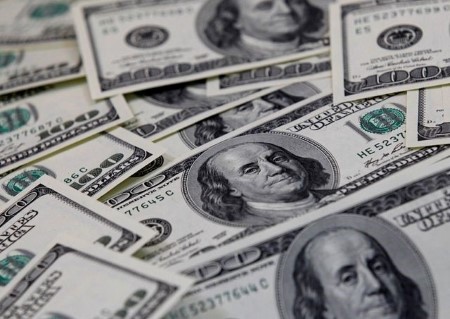




Policy Rate Updates: Double cut finale
 DOWNLOAD
DOWNLOAD

Monthly Economic Update: One for the road
 DOWNLOAD
DOWNLOAD

Inflation Update: Still low, still slow
 DOWNLOAD
DOWNLOAD


Dollar up on risk aversion; sterling, Swiss franc slip despite rate hikes

NEW YORK, June 22 (Reuters) – The US dollar advanced against a basket of currencies on Thursday after Fed Chair Jerome Powell backed more US rate increases albeit at a “careful pace” and as a spate of interest rate hikes by several central banks fueled concerns over the outlook for global growth.
Sterling was volatile, the Swiss franc fell and the Norwegian crown rose on Thursday after the Bank of England (BoE), the Swiss National Bank (SNB), and Norges Bank all hiked their benchmark interest rates.
The slew of rate hikes come a day after Powell told lawmakers on Capitol Hill further rate increases were “a pretty good guess” of where the central bank was heading if the economy continued in its current direction.
During the second day of testimony, Powell said the central bank would move interest rates at a “careful pace” from here.
Asked about rate cuts, Powell said “we don’t see that happening any time soon … It is going to have to wait a time when we’re confident that inflation is moving down to 2%,” the Fed’s inflation target.
The dollar index, which measures the currency against six rivals, rose 0.372% to 102.4. Against the yen, the dollar was up 0.85% at 143.1 yen, its strongest level in more than seven months.
The Australian dollar, viewed as a liquid proxy for risk appetite, fell 0.58%.
“I believe the doom and gloom are back as a dominating narrative across markets now,” said Juan Perez, director of trading at Monex.
“It legitimately feels like while a recession may not entirely materialize, stagflation – low economic levels combined with stubborn inflation – is a tale to be had for the second half of the year,” Perez said.
US data on Thursday showed the number of people filing for state unemployment benefits for the first time held steady at a 20-month high last week, remaining elevated for a third straight week in what may be an early indication of a softening labor market.
UP, UP, AND AWAY
Sterling was 0.17% lower at USD 1.27465 in a choppy session after the BoE’s Monetary Policy Committee (MPC) voted 7-2 to raise its main interest rate to 5% from 4.5%, its highest since 2008 and its largest rate increase since February.
After inflation data held at 8.7% in May, defying market expectations and making it the highest of any major economy, investors had been split on how big the new BoE hike would be.
“They (the BOE) are trying to jump in front of inflation but at what cost? The mortgage market is seizing, the cost of living crisis is not easing and the GBP is going to be caught in the crossfire,” Brad Bechtel, global head of FX at Jefferies, said in a note.
The Swiss franc was about 0.3% lower against the greenback after the Swiss National Bank (SNB) hiked its benchmark interest rate by 25 basis points to 1.75%, defying some market expectations of a bigger increase.
Despite an easing in Swiss inflation, currently the lowest among G10 economies at 2.2%, SNB Chairman Thomas Jordan recently repeated his readiness to raise rates, encouraging markets to expect a 50-bps hike.
“Unlike the ECB (European Central Bank) and the Fed (Federal Reserve), the SNB can proceed slowly and steadily with its monetary policy tightening,” said Thomas Gitzel, chief economist at VP Bank Group in Liechtenstein.
Against the Norwegian crown, the dollar was about 0.05% lower after having slipped by as much as 1.3% after the Norges Bank raised its benchmark interest rate by 50 bps to a 15-year high, more than expected by a majority of economists surveyed by Reuters, and said it aimed for another hike in August.
In cryptocurrencies, bitcoin was up 0.37% at USD 30,119, on pace for a fourth straight day of gains after hitting its highest level since mid-April, boosted by BlackRock’s (BLK) plan to create a bitcoin exchange-traded fund (ETF) even as the sector faces US regulatory scrutiny.
(Reporting by Saqib Iqbal Ahmed in New York; Additional reporting by Joice Alves in London; Editing by Alex Richardson and Matthew Lewis)
This article originally appeared on reuters.com





 By Reuters
By Reuters